Specialized Turbo Levo 4
Wheel Size: 29’’ front / 27.5’’ rear
Suspension Travel:
- Frame travel: 150 mm
- Fork travel: 160 mm
Geometry Highlights:
- Sizes offered: S1, S2, S3, S4, S5, S6
- Headtube angle: 64.5°
- Seat tube angle: 77.0º (effective)
- Reach (size S4): 480 mm
- Chainstay length: 435 mm
Drive System Highlights:
- Motor: 3.1 / S-Works 3.1
- Torque: 101 Nm / 111 Nm
- Power: 666 W / 720 W
- Battery: 840 Wh
- Display: MasterMind T3 Display
- Remote: MasterMind T3 Remote
Frame Material: Carbon fiber and aluminum
Price:
- Complete bikes $5800 – $13499 (build details below)
- S-Works Levo 4 Frameset: $7,499
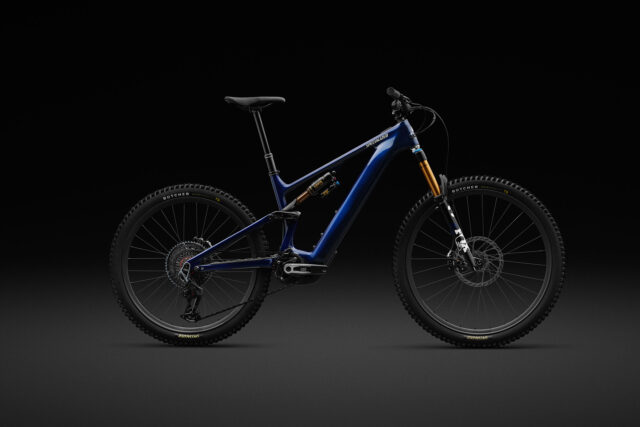
Intro
Specialized has done a lot to push eMTB technology along, and their ability to design the eMTB-related components in-house has led to class-leading integration. So, to put it mildly, we’ve been eagerly anticipating a new version of the Turbo Levo 4 for a while, and now it’s finally time to see what they’ve come up with.
In many ways, 2024 was the year of lightweight, light-assist eMTBs. A ton of new bikes dropped in that category, spurred by a couple of new drive system releases — and we’ve reviewed a whole bunch of them. But things change quickly in the eMTB world, with motor and battery technology evolving extremely rapidly. So far in 2025, it feels like the pendulum is swinging back in favor of full-power eMTBs, and many of the recently released bikes are claiming lower weights than the bikes they replaced (mostly thanks to lighter, higher-density batteries).
Specialized has leaned in the full-power direction by spec’ing a very large battery as standard in the new Levo. But that’s only half the story since they have also designed the system to be interchangeable with an available aftermarket, smaller, lighter battery. We have a Turbo Levo 4 coming, but before it arrives, let’s check out what Specialized has come up with. Interestingly, they’ve opted to spec the Turbo Levo 4 aluminum models with the big battery too, again cementing their approach of offering strong range potential out of the box. We just got a Turbo Levo 4 in for review, so let’s check out the details here and our Flash Review for initial ride impressions.
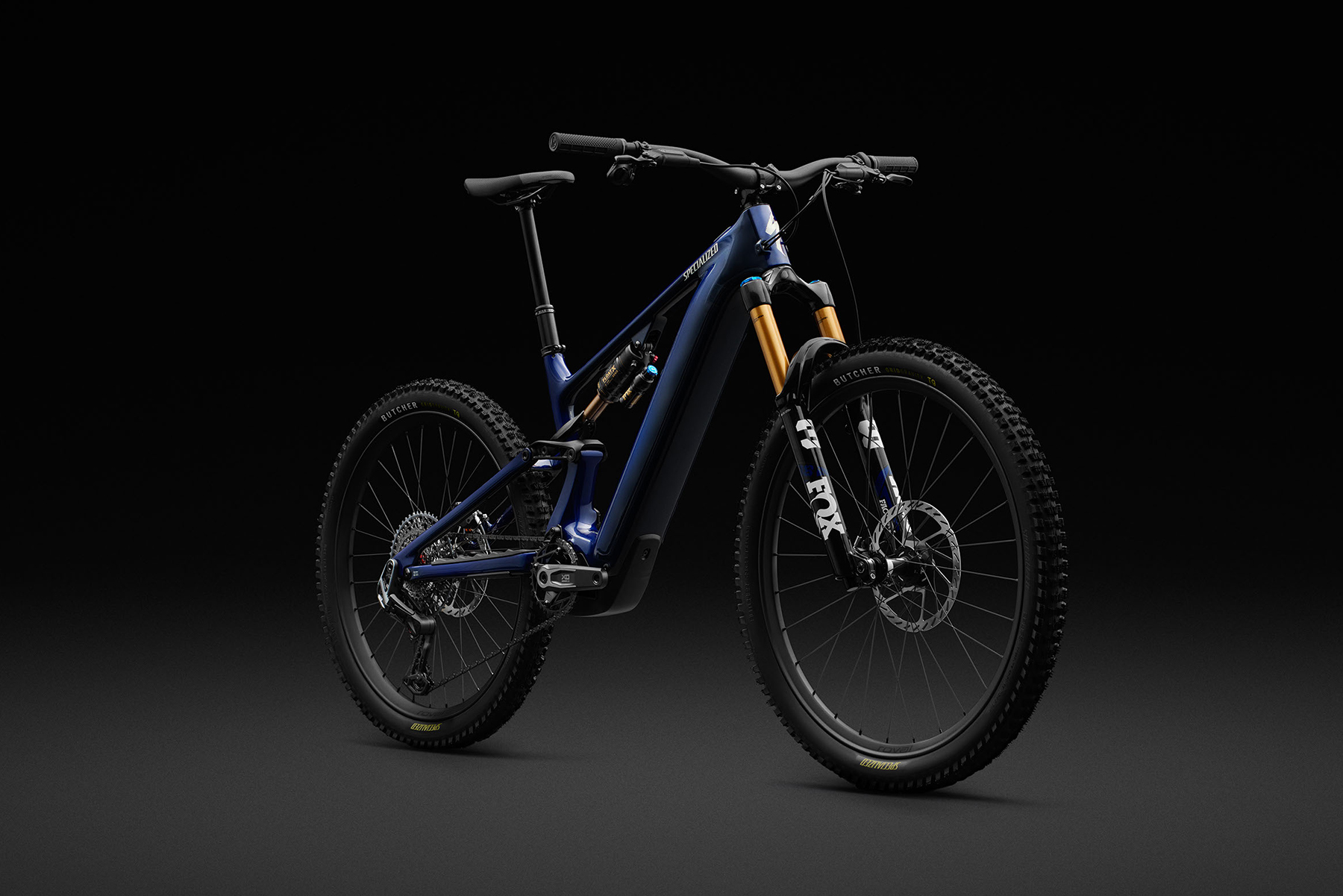
The Frame
The Turbo Levo 4 keeps the mixed-wheel setup of the Turbo Levo 3 — we found that complemented its personality when we reviewed it, and are optimistic that the same will apply to the new version. The Turbo Levo 4 is available in Specialized’s FACT 11m carbon fiber or M5 aluminum, and the new frame eschews the right-side front triangle brace from the Turbo Levo 3 and visually has more in common with the newer Stumpjumper 15.
In addition to the visual similarities to the Stumpjumper 15, the Turbo Levo 4 also adopts its Genie rear shock technology. The new Genie rear shock still manages 150 mm of rear suspension travel via a four-bar linkage and yoke arrangement (unchanged from the Turbo Levo 3). We go into detail about the Genie rear shock here, but the basic concept is that the Genie shock starts with a large volume positive air chamber, then closes off the outer air sleeve part way through the stroke to make the shock more progressive from that point forward. The Turbo Levo 4 Alloy (which is the lowest build level) is the only model that does not come with the Genie rear shock; it has a Marzocchi Bomber Inline in its place.
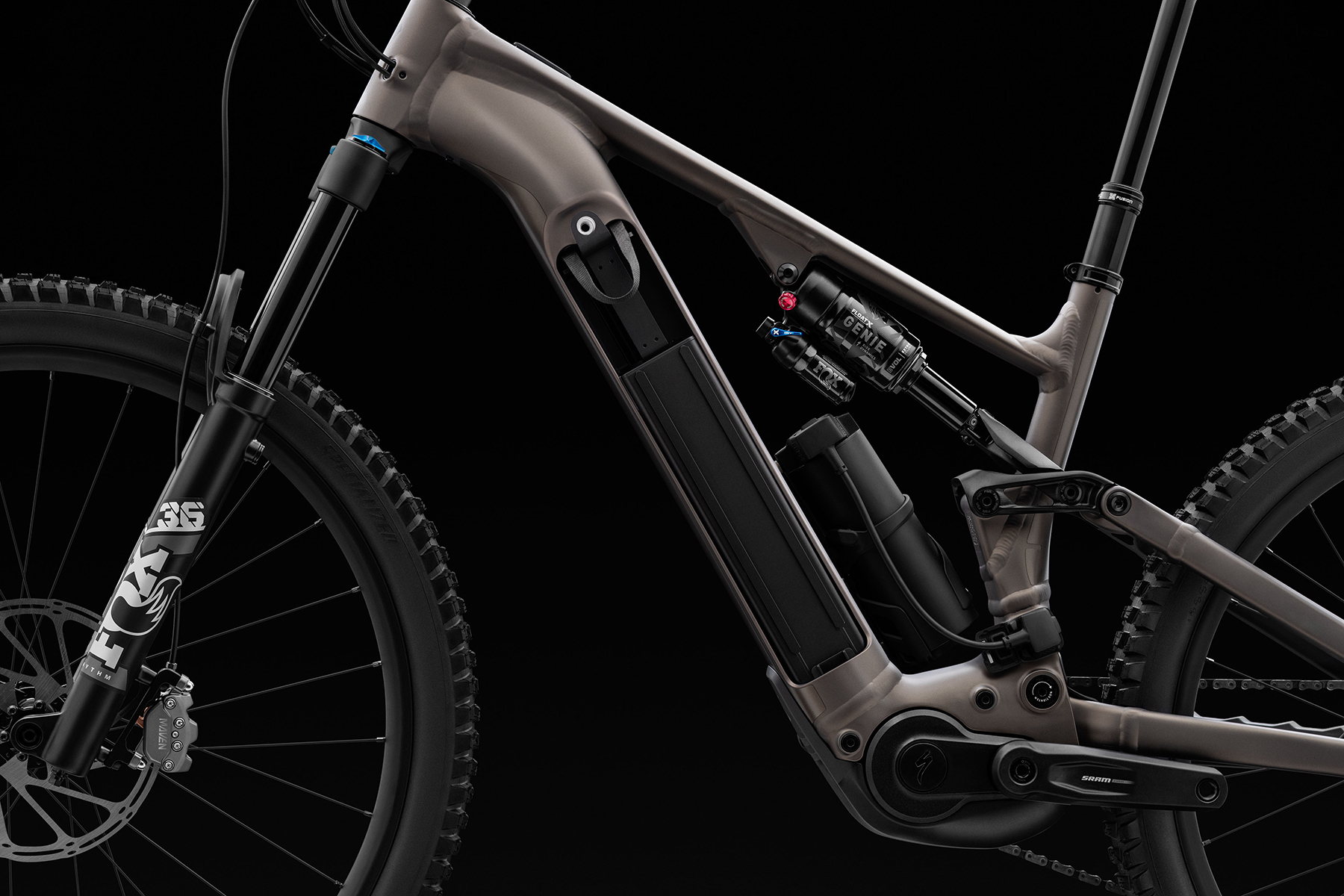
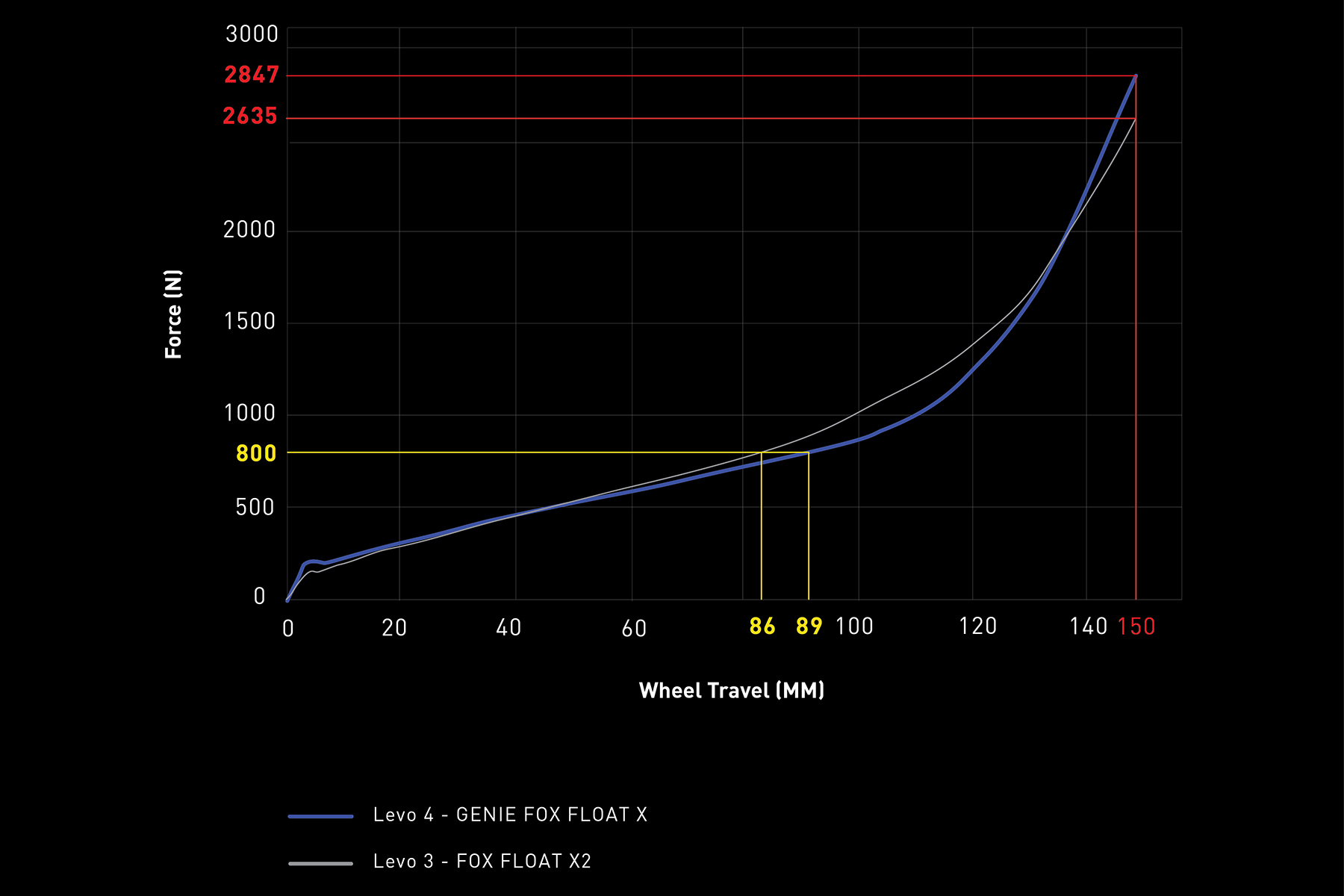
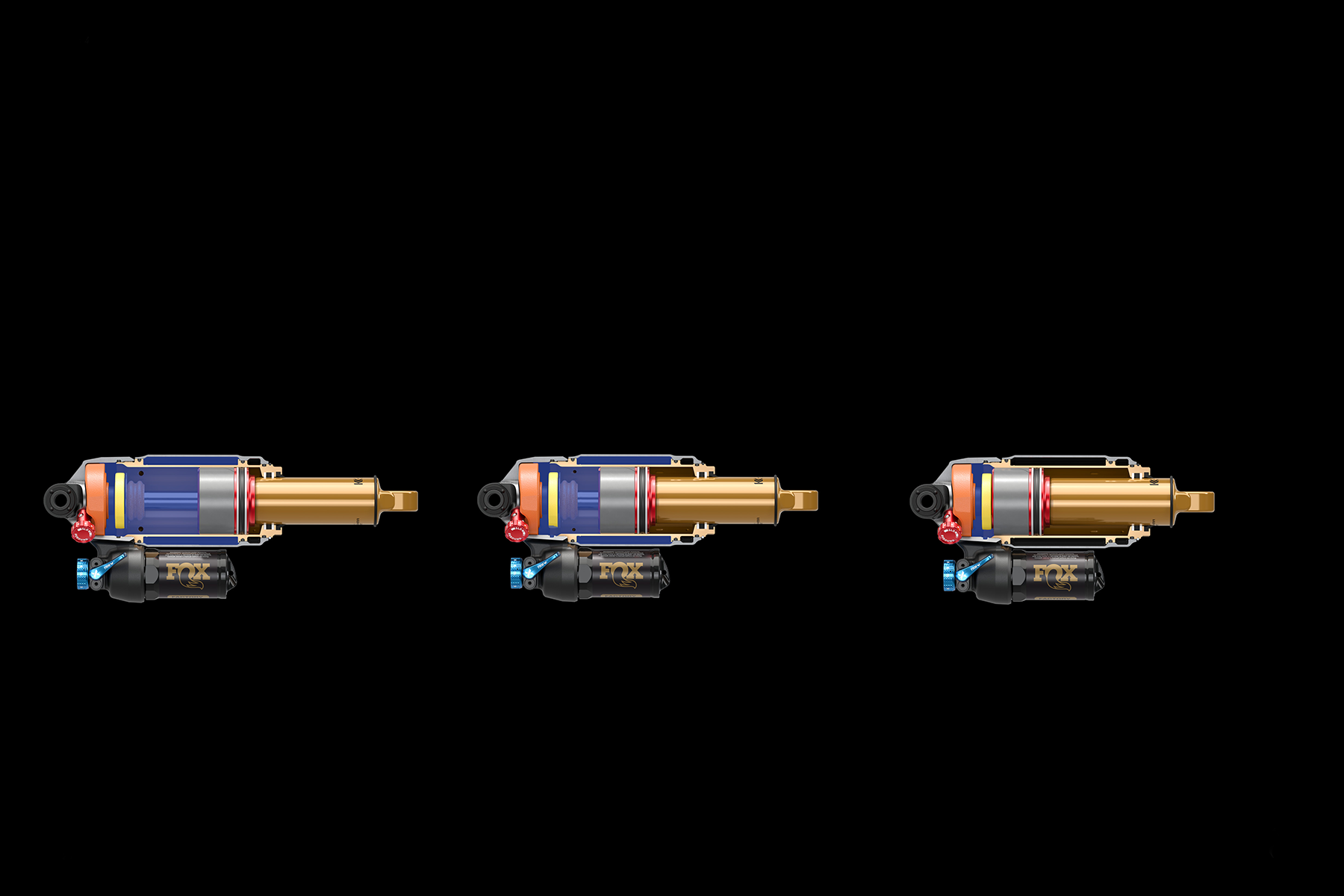
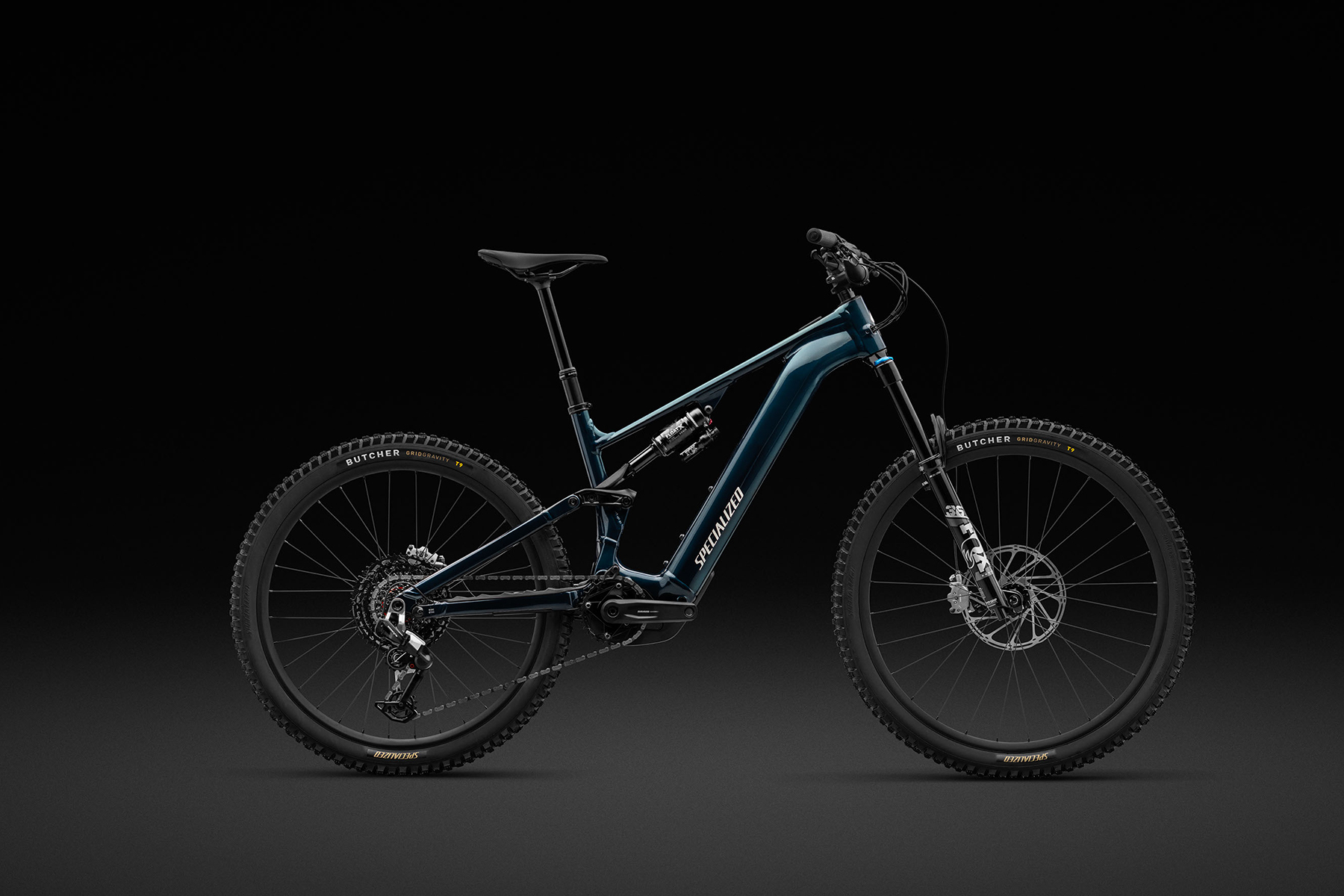
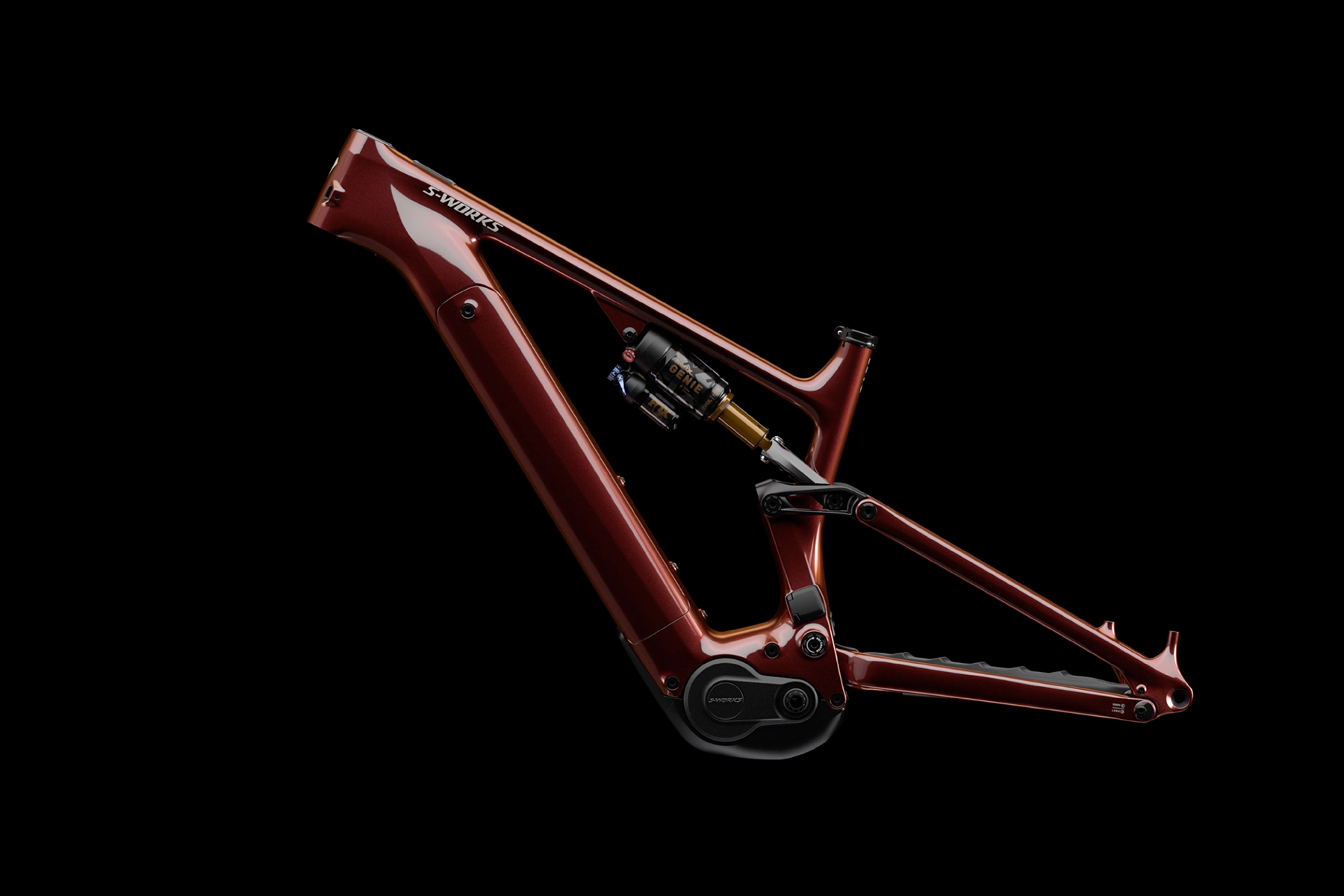
Specialized was a pioneer in downtube storage with SWAT, but it’s still a surprise that they’ve integrated downtube storage into an eMTB. Obviously, having a battery in the downtube is why eMTB downtube storage hasn’t been a thing, historically. The Turbo Levo 4 has a removable hatch on the non-drive side of the downtube that spans most of the downtube. The hatch opens up the majority of the battery compartment, making it easy to switch battery sizes. The hatch also does double duty by accessing the SWAT storage area, which has more or less space depending on your battery choice. The smaller 600 Wh battery gives you more SWAT storage space than the bigger 840 Wh battery.
Most of the frame details are the same across all the builds, except for the top-tier S-Works frame, which gets a carbon shock extension instead of an aluminum one. Other than that, all the frames get a SRAM UDH, SWAT storage, interchangeable battery compatibility, and room for 200 mm dropper posts (size S4).
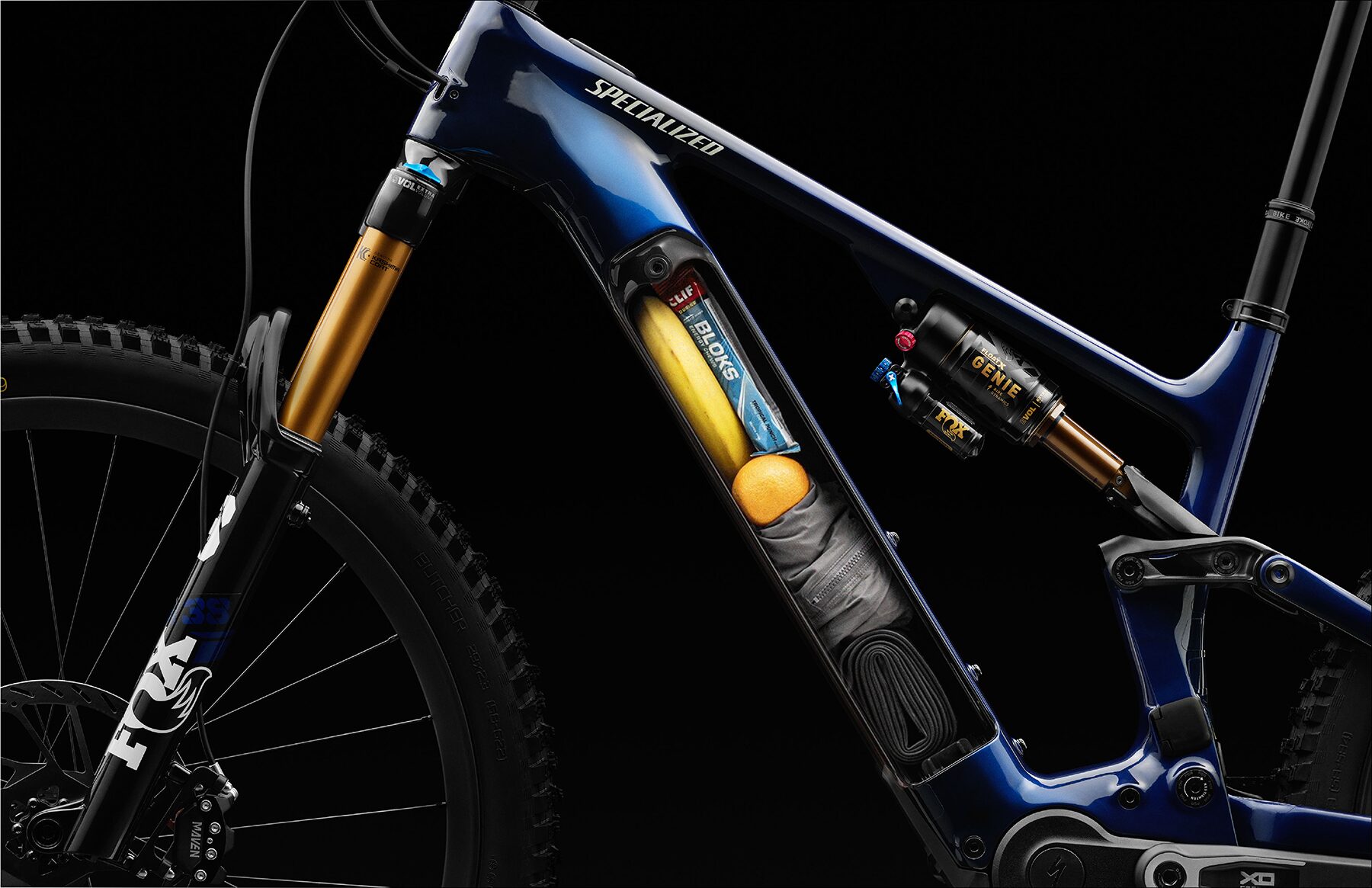
Drive System
The big news surrounding the Turbo Levo 4 is the new 3.1 drive system. A quick glance at the specs shows that Specialized has prioritized more power and range over low overall weight — but with some options for customization that we’ll touch on in a minute.
With that said, let’s dive right into the main influence on weight in an eMTB — the battery. All Turbo Levo 4s come with an 840 WH battery. 840 Wh is on the larger side, and while Specialized has not disclosed how much the battery weighs, it likely is a big part of why all Turbo Levo 4 models weigh over 52 lbs complete. As mentioned above, Specialized will offer a 600 Wh battery as an aftermarket accessory — I appreciate spec’ing the larger capacity and more expensive battery, leaving the 600 Wh battery as a less costly option likely only considered when looking to save weight. Still, I’m not sure how realistic it will be for riders to have both battery sizes. A more common scenario could be that the battery size decision is made at the dealer when purchasing the bike. I think if Specialized dealers offered a battery swap program, it would be well received.
We haven’t seen pricing for the 600 Wh battery yet, but it’s probably not cheap; similar-size batteries offered by other brands typically cost well over $700. The thing is, though, the smaller 600 Wh battery could very well have a fairly big impact on how the Turbo Levo 4 rides. Specialized claims the 600 Wh battery offers “nimble handling manners for shorter rides.” We’re hoping to get our hands on one while we have the Turbo Levo 4 in for testing so we can report back. Additionally, as mentioned above, Specialized equips the aluminum models with the 840 Wh battery, which, based on the weight of the carbon models, will likely make them quite heavy.
Additionally, Specialized offers a 280 Wh range extender, which, in combination with the stock 840 Wh battery, brings total system capacity up to a massive 1120 Wh — which, according to Specialized, will get you 4.75 hours of ride time (in Eco mode with an 80 Kg rider, and lots of climbing). Estimated range numbers are fairly pointless, given how many variables there are, but 1120 Wh should offer a ton of range.
The new 3.1 motor has a claimed power output of 666 watts and torque output of 101 Nm. Those are class-leading numbers, making the Turbo Levo 4 one of the more powerful eMTBs on the market. The S-Works 3.1 motor puts out even more, with 720 watts of power and 111 Nm of torque. We’re curious if there are internal differences in the motors or if the extra power is software-related.
Specialized’s description of the drive system firmware is long on automotive-derived terminology that isn’t described in much detail (including ”Direct Current Injection” and “advanced Turbo firmware”), but brushing aside the over-the-top marketing speak, Specialized has seemingly put a lot of effort into refining the power delivery of the 3.1 motors. Claimed improvements to the 3.1 motor include more precise torque sensors, enhanced heat dissipation, larger full-metal gears with a hardened finish, and other internal tweaks said to help minimize vibrations. We look forward to seeing how all that plays out on the trail, especially on steep technical climbs where Specialized has claimed the Turbo Levo 4 consistently bests the competition.
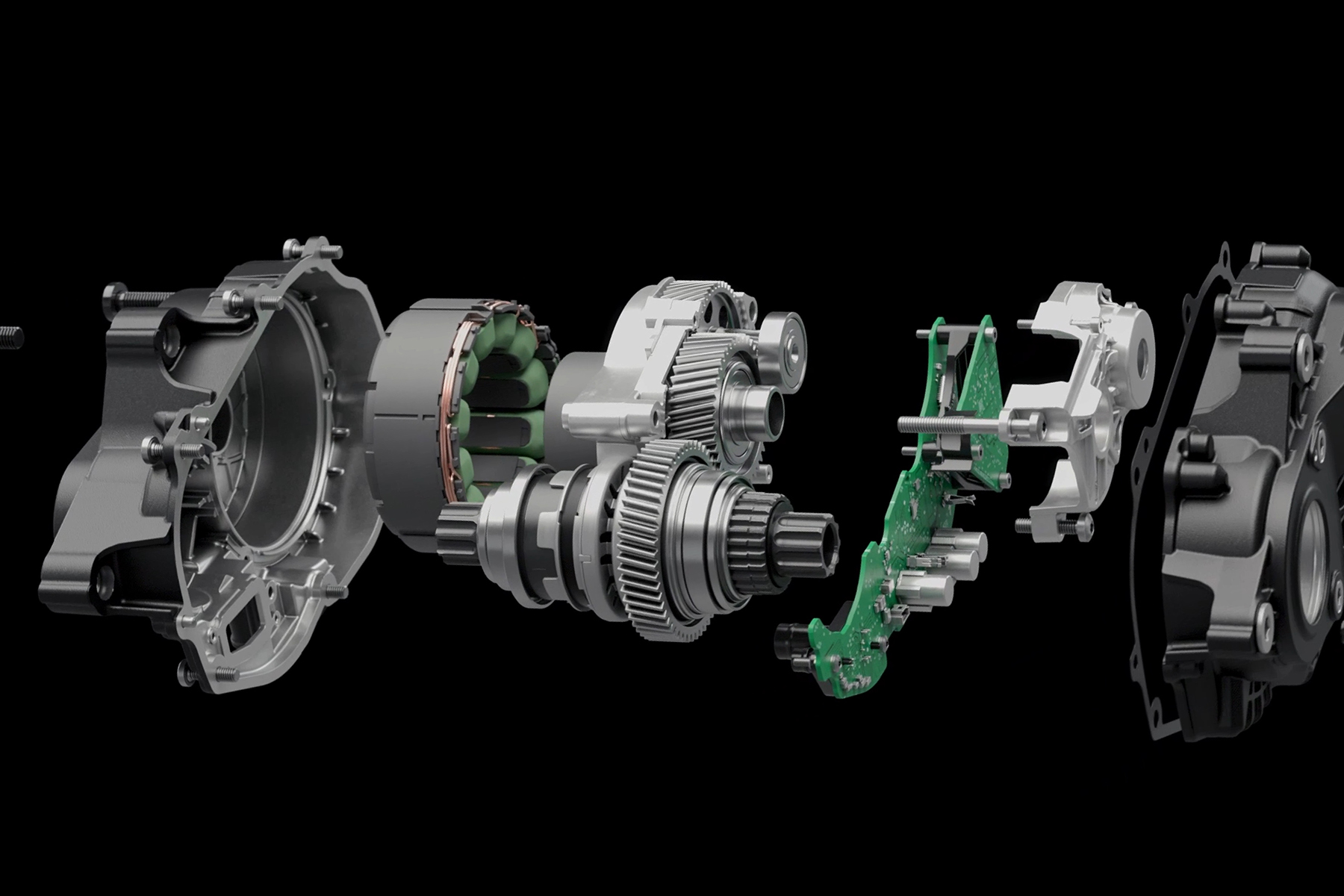
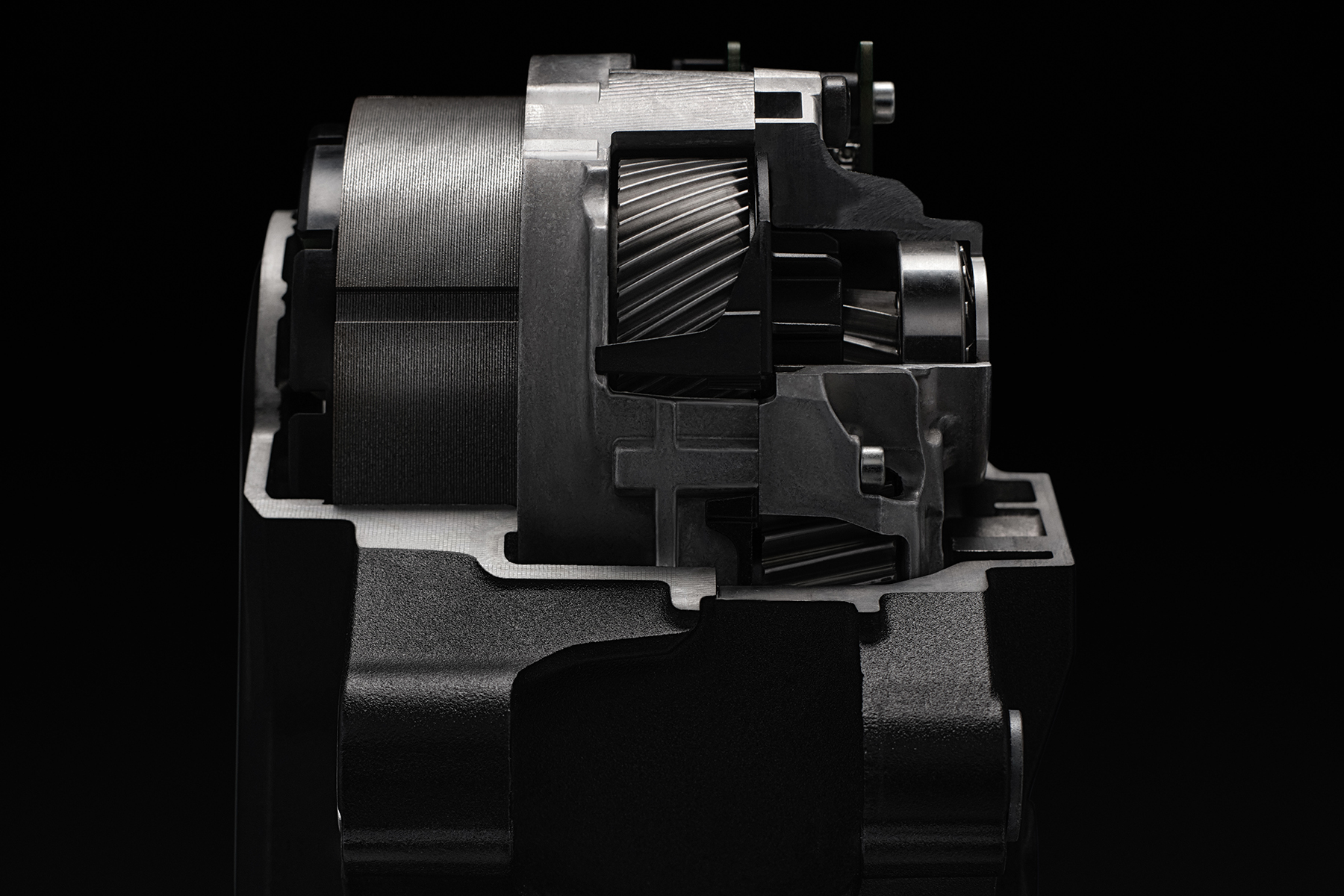
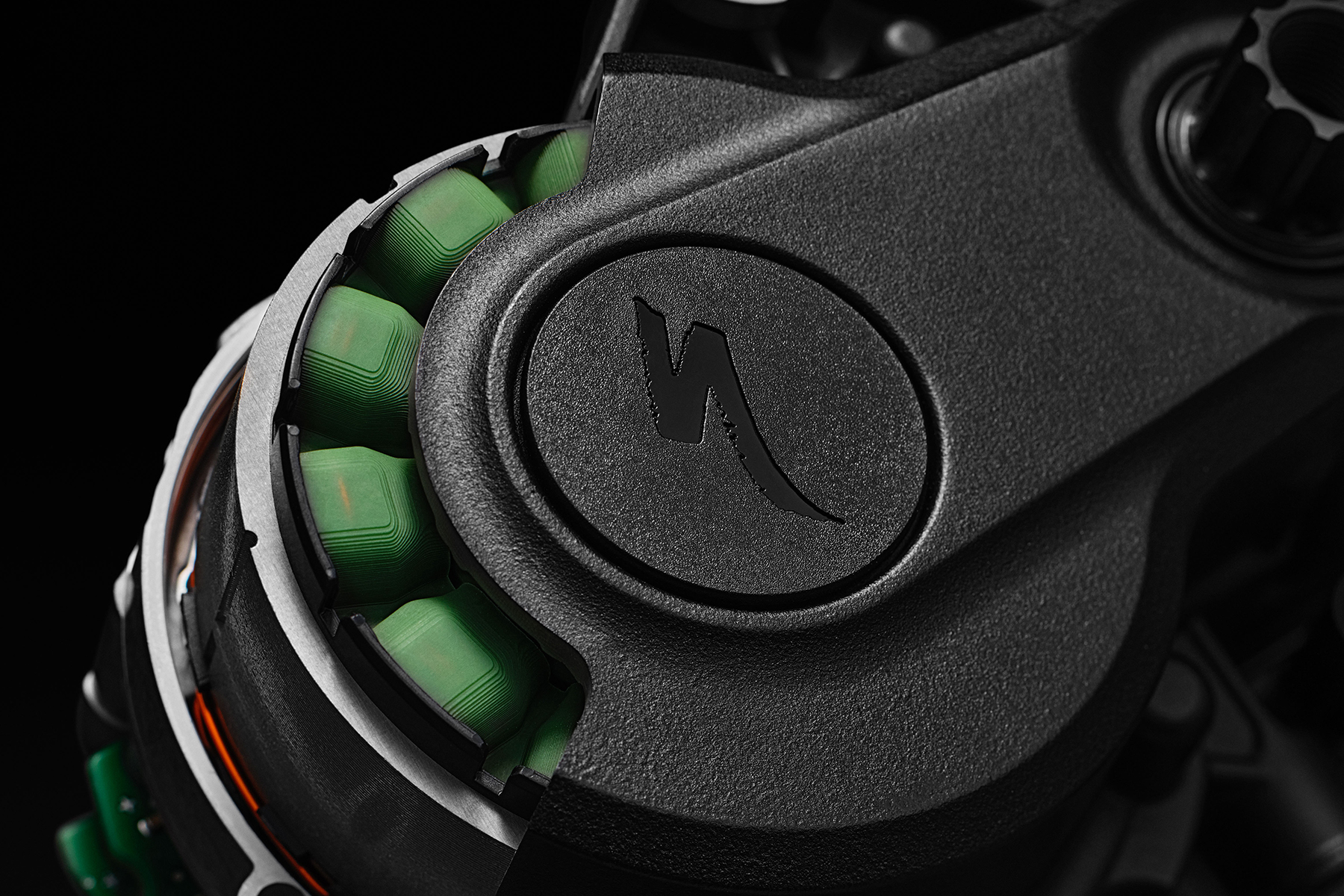
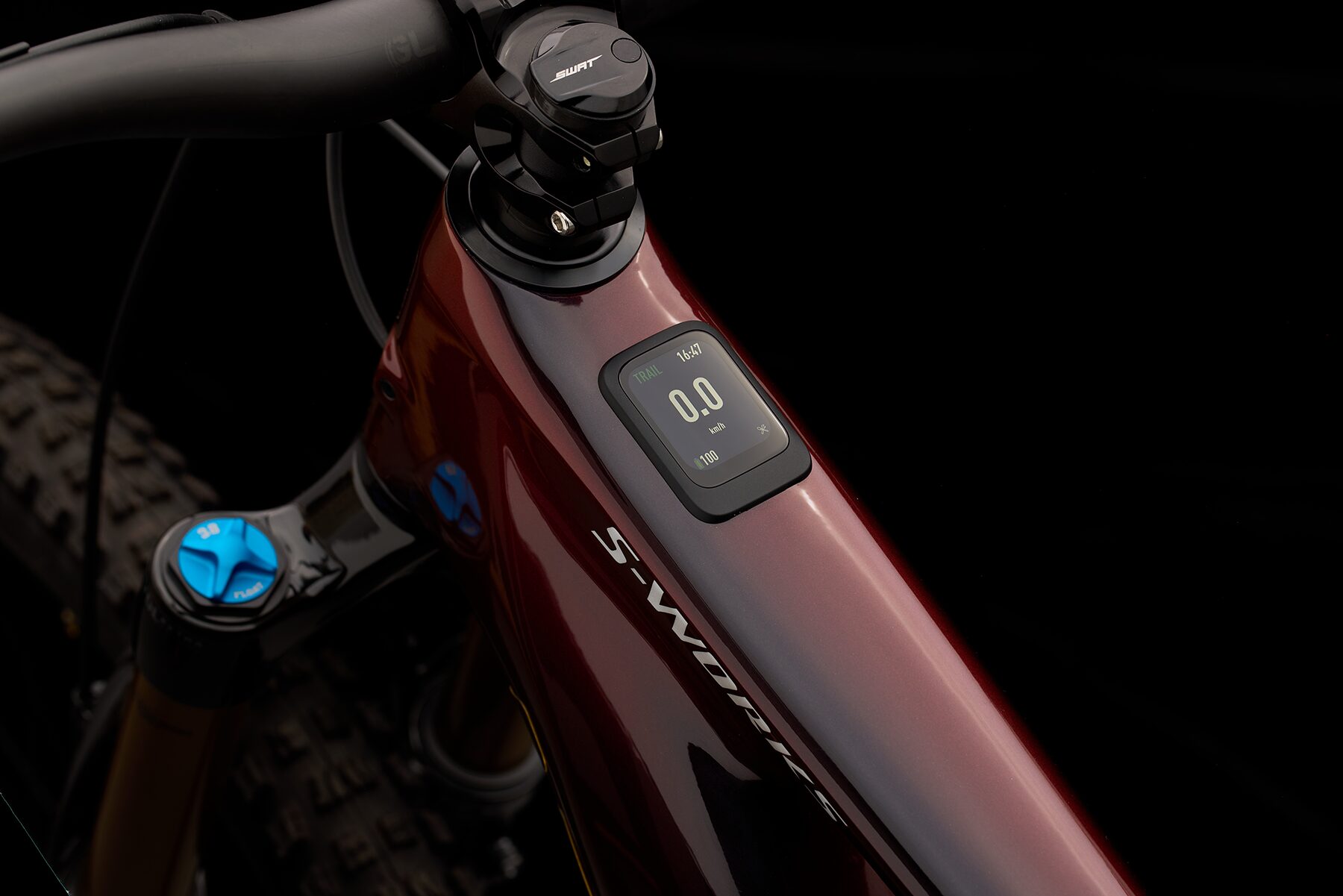
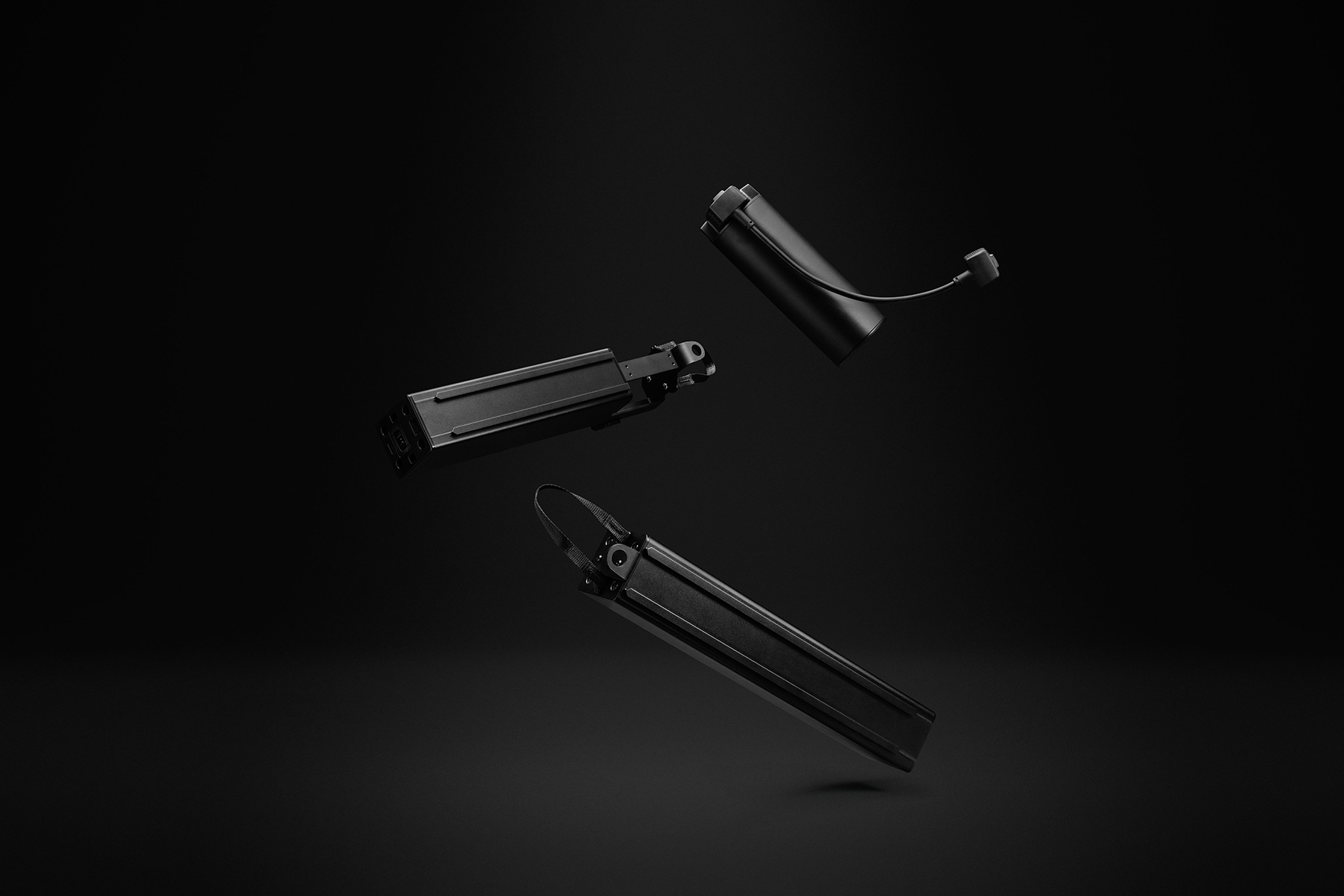
All Turbo Levo 4 models have the same MasterMind T3 integrated top tube display. I’m a fan of the MasterMind displays and consider them to be some of the best top tube displays available. The New MasterMind T3 looks to improve on the previous generation with a bigger, higher-resolution screen and more available data/metrics.
The Specialized app has the usual performance data, including distance, power, heart rate, battery usage, etc. Plus, it can track your bike through Apple Find My, and much like the Bosch app, it also has a remote bike-locking function.
Finally — and this is pretty news-worthy — Specialized ships the Turbo Levo 4 with a 4 amp / 200 watt charger, which is pretty much the standard for most brands — but they also offer a beastly 12 amp / 700 watt charger they claim will take the battery from 0 to 80% in under an hour, which is crazy fast.
Fit & Geometry
The new Levo is offered in six sizes, from S1 to S6 (carbon models aren’t offered in the S1 size). Offering a size S1 for a full-power eMTB is kind of a big deal (we think anyway), yet Specialized is quietly adding it to the aluminum Turbo Levo 4 range. According to Specialized, the size S1 accounts for a pretty small portion of total sales, so the team chose to make it in alloy and not carbon since the alloy has higher volume. Additionally, the size S1 aluminum builds also get the huge 840 Wh battery, which, given the obvious packaging constraints for fitting the battery in the downtube of such a small frame, is pretty crazy, and well done to Specialized for squeezing it in there.
I’m typically a size S4 in Specialized sizing, and after looking over the geometry chart for the Turbo Levo 4, that is the size we have on the way for review. The reach has grown 3 mm over the Turbo Levo 3, bringing it up to 480 mm — right in the middle of my preferred range of 475 to 485 mm.
Specialized has kept the geometry numbers for the Levo 4 pretty similar to the outgoing model, which is fine by us, given that we got along very well with the Turbo Levo 3 we reviewed. The new frame retains much of the chainstay length, bottom bracket height, and headtube angle adjustability of the outgoing model. However, the Turbo Levo 3’s chainstay and bottom bracket adjustments were tied to the same flip-chip adjustment in the swingarm. The Turbo Levo 4 now has independent adjustments for the chainstay length and bottom bracket height. The geometry adjustability adds a nice measure of versatility to the Turbo Levo 4 allowing the rider to decide how progressive or conservative they want to set it up. Granted, the +/- 1º of headset angle adjustability only drops it down to 63.5º, which isn’t that slack anymore, evidenced by some widely slack head tube angles we’ve been on recently. But in my opinion, it is still plenty aggressive for a 150/160 mm travel Trail bike.
The Turbo Levo 4 will ship in the short chainstay position (435 mm). While not overly short for a mixed-wheel bike, folks in the upper sizes range who ride a lot of steep terrain will likely be thankful they can lengthen them by 9 mm.
The geometry chart below shows the numbers for the chainstays in the short position, the bottom bracket in the high position, and the headset angle in the neutral (middle) position. Specialized doesn’t publish full charts for all the options, but to give a rough idea: add 9 mm to the chainstays when switching to the long setting, take 6 mm off the bottom bracket height for the low position, and there’s +/- 1° headtube angle adjustability via the included offset headset.
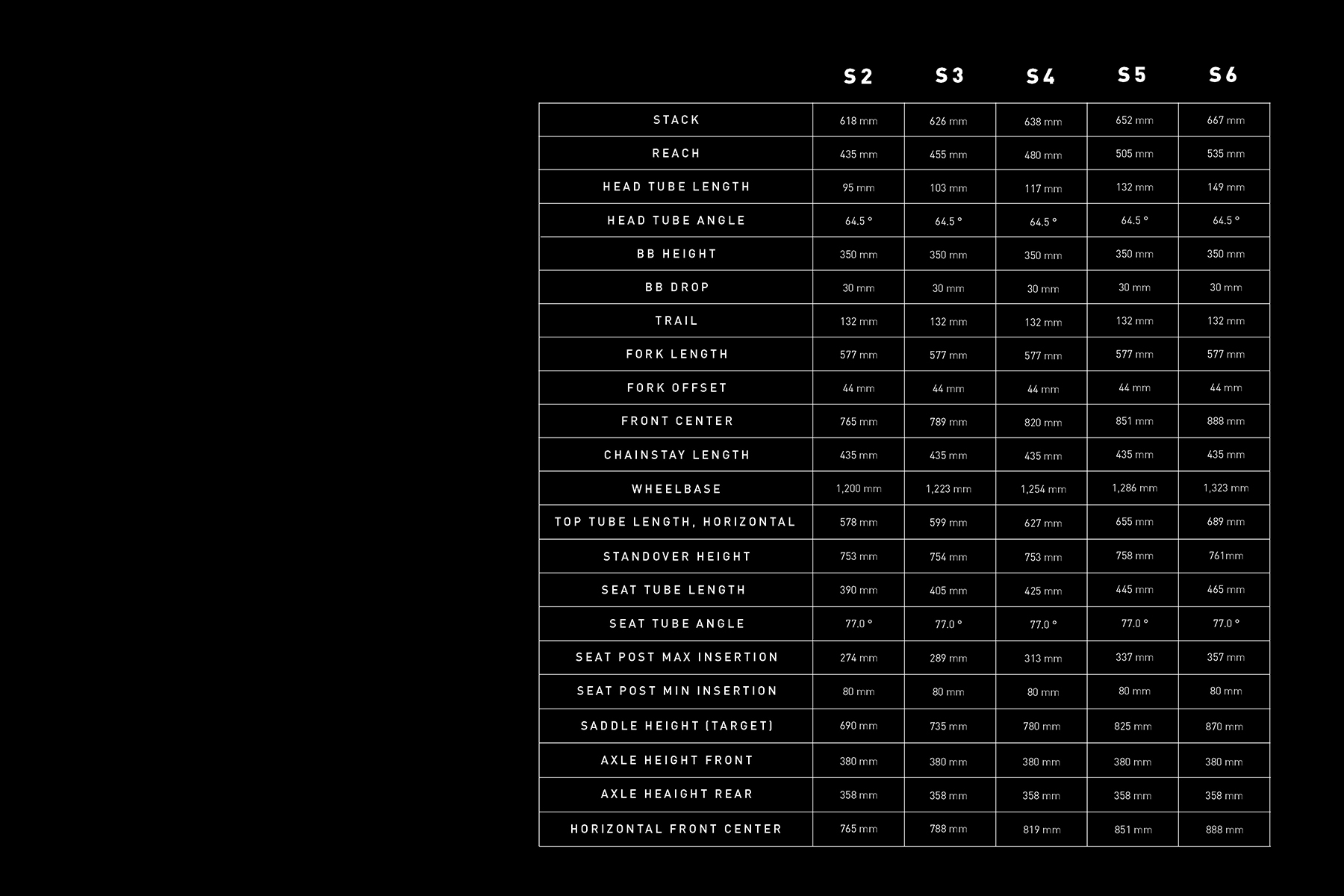
The Builds
Specialized offers four familiar builds for the carbon Turbo Levo 4: Comp, Expert, Pro, and S-Works; and two builds for the aluminum models: Alloy and Alloy Comp. All carbon models get Fox suspension, SRAM electronic Transmission shifting, and SRAM Maven brakes. Like the Stumpjumper 15, the carbon Levo models don’t have provisions for mechanical shifting, but the aluminum versions do.
The Turbo Levo 4 Alloy Comp model essentially mirrors the Turbo Levo 4 Comp (carbon) for parts spec, with the exception of the SRAM 90 mechanical drivetrain in place of the SRAM S1000 wireless one. Regardless, it’s only $600 less expensive, and I’m honestly having trouble seeing any reason to choose it over the carbon model. SRAM’s recently introduced AXS upgrade kit (for SRAM 70/90 drivetrains) costs $550 on its own, which puts you $50 shy of the carbon Comp, and you still have an aluminum frame.
The Turb Levo 4 Alloy is by far the budget build, and at $5,800, it represents a solid value, especially given that the entire drivesystem (including the larger 840 Wh battery and color Mastermind T3 display) is unchanged from the rest of the Turbo Levo 4 range (excluding the S-works model).
When we reviewed the Turbo Levo 3 Comp, we called out the Expert build as our pick for best overall value, which remains the case with the Turbo Levo 4. Spending $1,500 over the Cop build gets you upgraded Performance Elite suspension (and a beefed-up Fox 38 fork over a Fox 36), SRAM Maven Silver brakes, DT Swiss 370 hubs with Roval alloy rims, and a PNW Loam dropper post.
It’s worth noting again that there are different power outputs between the S-Works 3.1 motor and the standard 3.1 motor. I can’t help but think it is software and not hardware related, and perhaps an S-Works software upgrade will be available in the future.
Other nice features are the same 220 mm / 200 mm SRAM HS2 rotors, Specialized Gripton Gravity T9 compound TLR tires, and MasterMind T3 display on all build levels.
Specialized is still one of the few brands that offer framesets, especially for eMTBs. Yes, we know $7499 for just a frame, shock, and crankset is an eye-watering price, but it’s still cool that you can build an eMTB from a frameset any way you want.
On the warranty side, Specialized now offers the same lifetime bearing replacement program that is available on their non-motorized bikes for the Turbo Levo 4.
The full build details are as follows:

- Drivetrain: SRAM 70 Eagle T-Type Mechanical
- Brakes: SRAM Maven DB8 Stealth (220 mm front rotor / 200 mm rear)
- Fork: Marzochhi Bomber Z1 (160 mm)
- Shock: Marzochhi Bomber Inline
- Wheels: Specialized aluminum rims / Bear Pawls hubs
- Dropper Post: TranzX (S1: 100 mm, S2: 125 mm, S3: 150 mm, S4–S5: 170 mm, S6: 200 mm)
- Drivetrain: SRAM 90 Eagle T-Type Mechanical
- Brakes: SRAM Maven Bronze (220 mm front rotor / 200 mm rear)
- Fork: Fox 36 Rhythm Grip (160 mm)
- Shock: Fox Float X Genie
- Wheels: Specialized aluminum rims / Bear Pawls hubs
- Dropper Post: X-Fusion (S2: 125 mm, S3: 170 mm, S4–S6: 190 mm)
- Drivetrain: SRAM S1000 Eagle T-Type AXS
- Brakes: SRAM Maven
- Bronze (220 mm front rotor / 200 mm rear)
- Fork: Fox 36 Rhythm Grip (160 mm)
- Shock: Fox Float X Genie
- Wheels: Specialized Alloy rims / Bear Pawls hubs
- Dropper Post: X-Fusion (S2: 125 mm, S3: 170 mm, S4–S6: 190 mm)
- Drivetrain: SRAM GX Eagle T-Type AXS
- Brakes: SRAM Maven Silver (220 mm front rotor / 200 mm rear)
- Fork: FOX 38 Performance Elite Grip X2 (160 mm)
- Shock: Genie – Fox Float X2 Performance Elite
- Wheels: Roval Traverse Alloy rims / DT Swiss 370 hubs
- Dropper Post: PNW Loam w/travel adjust (S2: 150 mm, S3: 170 mm, S4–S6: 200 mm)
- Drivetrain: SRAM XO Eagle T-Type AXS
- Brakes: SRAM Maven Silver (220 mm front rotor / 200 mm rear)
- Fork: FOX 38 Factory Grip X2 (160 mm)
- Shock: Genie – Fox Float X2 Factory
- Wheels: Roval Traverse HD Carbon rims / DT Swiss 350 hubs
- Dropper Post: Bike Yoke Revive Max 3.0 (S2: 125 mm, S3: 160 mm, S4: 185 mm, S5-S6: 213 mm)
- Drivetrain: SRAM XX Eagle T-Type AXS
- Brakes: SRAM Maven Ultimate (220 mm front rotor / 200 mm rear)
- Fork: FOX 38 Factory Grip X2 (160 mm)
- Shock: Genie – Fox Float X2 Factory
- Wheels: Roval Traverse HD Carbon rims / DT Swiss 240 hubs
- Dropper Post: Fox Transfer Neo Factory (S2: 150 mm, S3: 175 mm, S4-S6: 200 mm)
- Drivetrain: SRAM XX Eagle Transmission Crankset (ISIS interface)
- Shock: Genie – Fox Float X2 Factory
Toggle Content
Some Questions / Things We’re Curious About
(1) Specialized has published weights for all the new Levo 4 models with the 840 Wh battery, but they haven’t included any weights for the batteries or the drive unit alone. What will the weight savings be with the 600 Wh battery, and will it be competitive with bikes like the Santa Cruz Vala?
(2) As with any new drive system, how does the power, range, and noise of the new 3.1 drive system compare to the competition?
(3) The Levo 3 Alloy models were popular with riders looking for an affordable eMTB to abuse. Has Specialized missed the mark by going with only carbon? Are alloy versions still in the cards?
(4) Will the standard 3.1 motor be upgradeable to the S-Works 3.1 motor’s power levels?
Bottom Line (For Now)
The Specialized Turbo Levo 4 looks like a thoughtful evolution of the Levo eMTB platform. Specialized has kept similar geometry/adjustability to the outgoing model and instead focused on improving the drive system and suspension. True to form, there are some innovative features baked in as well, and in conjunction with the new, more powerful 3.1 motor, multiple battery configurations, and the surprising appearance of downtube storage in an eMTB, the Turbo Levo 4 has the potential to be a very compelling option in the full-power Trail eMTB category — we have one on the way and can’t wait to find out.
Flash Review: Our Initial On-Trail Impressions
BLISTER+ members and those who purchase our Digital Access Pass can check out the Flash Review below to read our initial on-trail impressions. Get our Digital Access Pass to view all our Flash Reviews and Deep Dives, or become a BLISTER+ member today to get access to that and a LOT more, including the best worldwide Outdoor Injury Insurance, exclusive deals and discounts on skis, personalized gear recommendations from us, and much more.
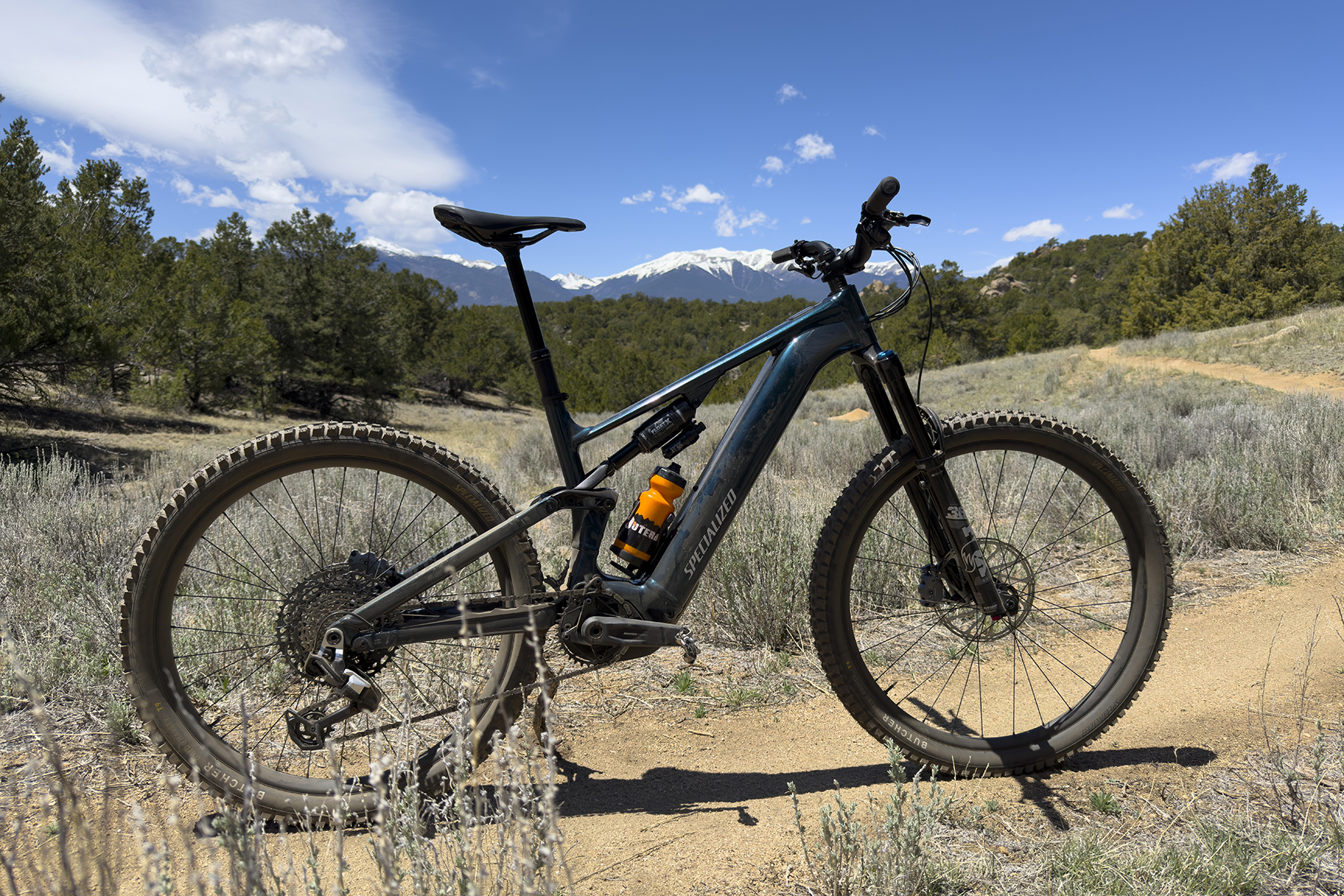
Flash Review: Specialized Turbo Levo 4
We’ve been spending time on the Specialized Turbo Levo 4. Find out how the new motor compares to the competition, plus some initial ride impressions.
Blister’s Flash Reviews and Deep Dives are accessible to those who purchase one of our paid subscriptions
To get our comprehensive Deep Dives and our initial, unfiltered reports on new gear, become a member and receive many other services, deals, and discounts.
If you’re already an active member, please log in.
(If you’re already logged in and a member in good standing and seeing this message in error, please refresh this page in your browser.)
